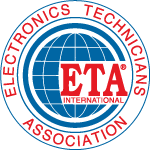
1/26/16
Courtesy of Brian Teague and Microcare
MIL-DTL-38999 Connector Cleaning and Sources of Contamination
Reason for cleaning connectors
- Mating dirty connectors might cause scratching and/or pitting ruining termini endfaces
- Cleaning both endfaces before mating will extend the service life and ensure reliable data transmission
Some Common Sources of Contamination
- Wear debris that moving parts generate when connectors are mated and unmated
- Debris attracted by the electrostatic charge generated from friction of a dry cleaning processes
- Cross contaminated alcohol that has been diluted from atmospheric moisture, lint from paper based wipes, or the broken cellular structure of foam tipped sticks


*Image of a dust contaminated endface courtesy of Promet Optics

Case for Using Sticks and Cleaning Fluid
1. Cleaning Performance
- The use of a cleaning fluid will break up heavy oils and residue contamination
- The strands in the cleaning stick tip create a capillary action, which wicks up contamination from the endface
2. Elimination of the Ferrule and Socket Electrostatic Charge
- Cleaning fluid is a dissipative medium that eliminates the electrostatic charge on the ferrule
- Cleaning with a moistened cleaning stick does not create an electrostatic charge during the wiping process
- The cleaning stick’s tip makes contact with the socket wall of MIL-PRF-29504/5 termini during the rotation process which dissipates the electrostatic charge
- Using the cleaning fluid will ensure compliance to IPC 8497-1 Sect 10
3. Largest Effective Cleaning Region
- The cleaning stick’s tip diameter is able to reach contamination that resides in the outer regions of the ferrule endface
- Removing contamination from endface periphery significantly reduces particle migration
Limitations of Mechanical Cleaners
- Dry wiping with a mechanical cleaner generates an electrostatic charge from the contact friction between the cleaner’s cleaning strands flowing across the ferrule endface
- Wet-dry cleaning with a mechanical cleaner is ineffective because the cleaning strand wicks up on both sides of the cleaning strand requiring multiple engages
- The cleaning tip outer diameter is reduced to prevent contact with socket walls that would interfere with the cleaning strand flow
- The effective region for current cleaners is limited to < Ø0.6mm for Ø1.6mm terminus
Recommended Sticklers Products

MCC P/N: S16
NSN 6070-01-553-2262
22mm length cleaning tip reaches 29504/5 socket termini and 29504/4 pin termini with an inspection adapter
NSN 6070-01-553-2262
22mm length cleaning tip reaches 29504/5 socket termini and 29504/4 pin termini with an inspection adapter

MCC P/N: P25
NSN 6070-01-553-2258
Recessed cleaning tip in handle enable cleaning of the periphery of 29504/4 pin termini
NSN 6070-01-553-2258
Recessed cleaning tip in handle enable cleaning of the periphery of 29504/4 pin termini

MCC P/N: POC03M
NSN 6850-01-592-9391
Non flammable, non aerosol precision cleaning fluid in hermitically sealed 3oz air ship safe steel can
NSN 6850-01-592-9391
Non flammable, non aerosol precision cleaning fluid in hermitically sealed 3oz air ship safe steel can
Recommended Cleaning Process
MIL-PRF-29504/5 Termini – MIL-DTL-38999

Applicable Products
- MCC P/N POC03M
Fiber Optic Splice & Connector Cleaner cleaning fluid - MCC P/N S16
1.6mm CLEANSTIXX cleaning sticks

For Best Results
- Angle cleaning fluid can and gently engage pump
- Moisten stick taking care not to over saturate
- Rotate stick in same direction 6X to 8X
- Use stick once to avoid accidental cross contamination
- To minimize foreign object damage (FOD) risk, work with a single sleeve with 10 sticks
MIL-PRF-29504/4 Termini – MIL-DTL-38999

Applicable Products
- MCC P/N POC03M
Fiber Optic Splice & Connector Cleaner cleaning fluid - MCC P/N P25
Pin CLEANSTIXX cleaning sticks

For Best Results
- Angle cleaning fluid can and gently engage pump
- Moisten stick taking care not to over saturate
- Rotate stick in same direction 6X to 8X
- Use stick once to avoid accidental cross contamination
- To minimize foreign object damage (FOD) risk, work with a single sleeve with 10 sticks
2016 © ETA® International. ALL Rights Reserved. Privacy Policy | Terms of Service | Site Map

